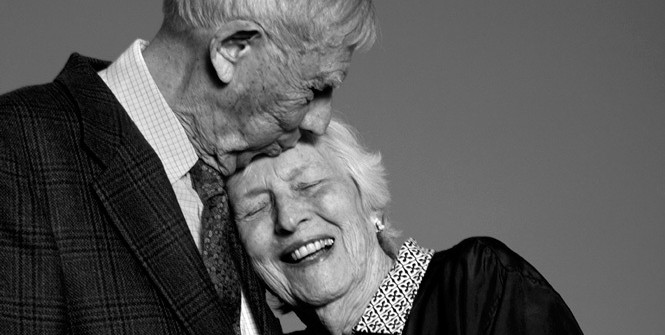Why Residents will never love your community until your employees love it first
Senior living communities place a tremendous amount of emphasis on cultivating and maintaining resident satisfaction. But might communities be missing the single most important piece of the puzzle?
It’s no secret that senior living as a whole has suffered from a less-than-ideal staff turnover ratio for many years. If you’re concerned about turnover rates yet dedicate most of your overall efforts to boosting lead generation, and resident happiness, it might be time to take a closer look at the link between employee satisfaction and resident satisfaction.
The Link Between Employee Satisfaction and Resident Happiness
Here’s the truth: “… Your residents will never love your community until your employees love it first.”
Think about it. Unhappy, overworked, and underappreciated staff aren’t always giving their all to their every interaction with your residents. Front-line staff who are exhausted from working constant overtime shifts due to unfilled positions may make careless mistakes that they wouldn’t otherwise be inclined to make when they’re well-rested and able to focus. Employees who are feeling resentful or underappreciated may not be inclined to go that extra mile that will make a resident’s day.
On the other hand, employees who love their jobs and their communities are the ones who always go that extra mile, always have a smile on their face and a welcoming listening ear, and consistently take the utmost care to ensure that the residents under their care are having the best possible day. How can anyone not love a senior living community with such an atmosphere?
It sounds wonderful in theory. But in reality, many communities implement various employee retention programs yet still fall short of truly fostering the ideal climate – the kind of company culture that promotes real job satisfaction and a sense of ownership in their staff so powerful that every employee doesn’t just show up but is actually excited to get to work. You can implement the most innovative resident satisfaction programs ever created, but if your employees deliver only half-heartedly with no enthusiasm for their jobs, their communities, and their residents, your efforts will fall flat.
There’s a difference between employees that stick around and employees that are genuinely happy. And if you think that your residents can’t sense the difference between employees who show up and get the job done and employees who are genuinely happy to be there, you’re mistaken.
The Ideal Community Culture Has a Multi-Faceted Focus
To get there, senior living communities must create a culture that’s simultaneously focused on both resident and employee satisfaction. A white paper from Holleran promotes the idea of an “engaged campus,” described as, “a community where the administration, staff, and residents live in harmony, while having the freedom to discuss and constructively debate new ideas and initiatives.”
It’s too easy to shift your focus to employee satisfaction, as a precursor to resident satisfaction, and let important resident happiness initiatives inadvertently fall by the wayside. That’s why a multi-faceted approach is crucial. Communities must create robust resident satisfaction programs and also foster the love of their communities among the workforce. It’s a genuine love for their careers and their communities that leads employees to embrace every detail – with enthusiasm – that makes a difference in residents’ lives and moves the community forward.
Are Your Residents Engaged?
Holleran found that 42% of residents in its national proprietary database are highly engaged in campus life. Holleran terms such residents “Promoters,” and points out that highly engaged campuses are often correlated with a positive community vibe with open collaboration to promote cultural change. The end result is an increase in resident referrals, higher occupancy rates, and less overall discord.
With less than half of residents falling into the Promoter category, where do the remaining residents fall? Holleran finds:
- 23% of residents in the Holleran database fall into the Less Engaged or Resistors categories.
- The remaining 35% of residents fall into the Endorsers or Advocates categories, described as residents who are engaged, but not fully.
Looking to the Future: Staffing Remains a Top Priority
In its Getting to 2025: A Senior Living Roadmap report (published in January 2016), Argentum identifies the most significant opportunities and challenges the senior living industry faces in the next 10 years, including:
- Workforce development
- Quality care
- Operational excellence
- Consumer choice
- Memory care
It’s obvious from this alone that both resident and employee needs will remain at the forefront among areas of focus for the industry moving forward. In relation to workforce development, Argentum offers several recommendations, including but not limited to:
- Expanding job creation while simultaneously investing in workforce training and development opportunities targeted to both existing and future employees.
- Conducting ongoing research to identify the key drivers of employment and engagement and implementing measurement systems to monitor key performance indicators (KPIs).
- Partnering with academic institutions with the aim of addressing the growing need for a robust, qualified senior living workforce. Interested in learning more? Connect with Scott Eckstein who is the Clinical Assistant Professor and Senior Living Executive in Residence at Washington State University.
- Developing professional credentials, which can improve the perception of senior living professions in the eyes of both the current and prospective workforce and also cultivate industry-wide standards for evaluating staff qualifications.
Other areas of focus for the next decade are hinged on senior living communities’ ability to attract and compete for top-tier talent while cultivating a company atmosphere in which both newly recruited talent and existing staff feel supported, valued, and empowered. This, in turn, fosters loyalty and a love for the community.
Thank you Simon Sinek for the inspiration behind the quote, and the title of this article. While reading Simon’s book, Leaders Eat Last, he quoted something quite profound which led me to revise his quote to fit our industry perfectly.
It’s quite do-able, as evidenced by Aegis Living, the first-ever senior living community to land in the Top 50 among Glassdoor’s Best Places to Work in 2017. We should not only applaud Aegis Living for a job extraordinarily well done, but take a page from their playbook to cultivate a sought-after company culture in a society that’s increasingly difficult to please. Then, and only then, will your resident satisfaction initiatives make a real impact.


